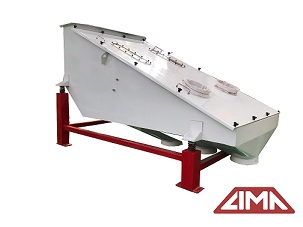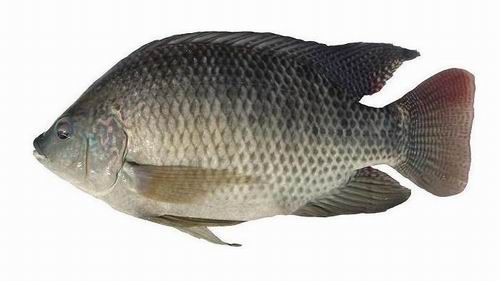1. Intensive cultivation mode
The intensive cultivation mode of tilapia developed rapidly in the past few years. Intensive cultivation, that is, pure tilapia cultivation, can produce more than 5,000 kilograms per mu, creating a lot of tilapia myths. The representative areas of the intensive breeding model are tropical and subtropical breeding areas such as Wenchang, Hainan and Nanning, Guangxi. Ponds need to be equipped with strong oxygenation capacity, and ponds with good conditions even have sewage systems.
Hainan, taking advantage of its unique climate, can raise three fish a year; Nanning, on the other hand, relies on its advantages in the domestic market, and the price of fish has been relatively strong. Tilapia in intensive culture mode grow fast and yield high, so they are highly respected by farmers in the two places. In addition, the peak market period of tilapia is from October to December, which is also the time when the price is the lowest. Tilapia under the intensive culture mode can be listed one month earlier, and farmers can make a time difference to avoid the peak fish output and impact the fish price. .
However, in the past two years, intensively cultured tilapia has faced the double test of streptococcosis and weak exports. Under the circumstance that the market situation in the past two years is still unclear, many large tilapia farmers are still in a wait-and-see mood. And I must say that the
floating fish feed machine is hot in Lima.

2. Tilapia-shrimp polyculture mode
The tilapia-shrimp polyculture model can be regarded as a relatively classic breeding model, which is also due to the frequent occurrence of shrimp diseases and the downturn of the tilapia market in recent years. This pattern is distributed in Taishan, Zhuhai, Zhanjiang and Maoming in Guangdong.
The tilapia-shrimp polyculture model is dominated by tilapia and supplemented by prawns. The two complement each other and improve the ability to resist risks. Farmers generally start to label rough tilapia fry and shrimp fry in the middle and late March. The seedling density of tilapia is 2500-3000/mu, and the shrimp fry is 20000-30000/mu, mainly the second generation. After the standard thickness, the size of tilapia fry reaches 50/catties, and when the size of shrimp fry reaches 800/catties, tilapia and prawns can be mixed in ponds. There are also some farmers who directly put shrimp fry in the tilapia fry pond, and then replenish the fry in a timely manner during the breeding process. Farmers with sufficient ponds can start preparing the standard thickness of the second crop in the middle of the first crop to achieve the goal of maximizing aquaculture efficiency. Tilapia is fed in the whole process, while vannamei shrimp does not feed or feed less. Taking advantage of the omnivorous characteristics of prawns, the utilization rate of feed and the purification capacity of ponds are improved, and the risk and cost of breeding are reduced.
The prawns can be harvested at the beginning of June, and the land cages are used for catching. The annual output per mu is about 200 catties. Calculated at an average price of 15-20 yuan/catties, the per-mu output value of prawns is 3000-4000 yuan, which can offset most of the tilapia. feed expenditure. Tilapia can be marketed in batches in mid-September, with a bait coefficient of about 1.3 and a yield of 2,500-3,000 catties per mu. Taking advantage of the high value-added characteristics of prawns, this model can greatly improve the farming income of tilapia.
3. Intensive breeding of large-sized tilapia
In recent years, the market for large-sized tilapia of 3-4 catties has been very stable, with an average price of about 10 yuan / catty, and the profit margin is not small. It is chased by some farmers. The breeding areas are mainly concentrated in Zhuhai and Foshan. Near high-consumption cities. In this mode, the seedlings are generally invested in March, and the amount of seedlings per mu is 3000-4000 (size 7-8). After 3 months of breeding, farmers can choose to remove some commercial fish or separate ponds for breeding to speed up capital. Turnover and reduce farming risks in hot seasons. After raising until the end of the year, the size of tilapia reaches 3-4 kilograms, and farmers can produce fish in batches according to market conditions. Taking the farmers in Pingsha, Zhuhai as an example, under this model, the annual output of tilapia can reach 6,000 kilograms, and the profit per mu is as high as 12,000-15,000 yuan.
Although profitable, this farming model is only suitable for farming areas close to wholesale markets or urban consumer groups. These areas not only have strong consumption capacity for large-sized tilapia, but farmers can also directly connect with the market to obtain greater profit margins.
In addition, raising large-sized tilapia must overwinter, because the price of tilapia is the highest after the year when the green and yellow are not in contact. Whether it can survive the winter has become the most concerned issue for tilapia farmers. Therefore, this model is only suitable for ponds with winter sheds and sufficient groundwater or geothermal heat. This model has a long breeding cycle and high cost. Farmers should choose according to their own pond environment and market environment, and do not blindly follow the trend. If you want to learn the fish feed machine price, you can come to
limapoultrymach.

4. Three-dimensional breeding mode
Stereoscopic farming includes traditional fish-duck polyculture and fish-pig polyculture, which are mainly concentrated in eastern Guangdong and inland large-water aquaculture areas. Taking the mixed breeding of fish and ducks in eastern Guangdong as an example, the stocking density of tilapia is 800-1000 tails/mu (size 8-9), and it is also matched with filter-feeding and omnivorous fish such as bighead carp, silver carp and dace. kind. Feeding open feed in the fry stage to improve the survival rate, no feed or less feed in the middle of the breeding period, when the fish reaches a size of more than half a catty, they start feeding tilapia feed for fertilization, and some farmers will feed duck feed when they are waiting for the price of fish . The bait coefficient of the whole process is about 0.6-0.8, and the breeding cost is 2-3 yuan/catties.
According to an industry personnel analysis, the cost of intensive tilapia culture is generally 3.5 to 4 yuan per kilogram, polyculture is 3 to 3.5 yuan per kilogram, and the cost of three-dimensional culture is 2 to 3 yuan per kilogram. Under the current situation, the first two breeding modes are loss-making transactions. Therefore, for now, three-dimensional farming is still the best farming mode for tilapia farmers to avoid market risks.
In the short term, the three-dimensional breeding model will not disappear, but as the policy level shifts and the breeding industry and environmental protection are linked, the government will strengthen the management and control of the pond breeding environment. Some areas have banned the construction of pig houses and duck sheds in ponds. In the long run, farmers still have to make timely changes to cope with changes in the general environment.
5. Large polyculture mode
Large-scale polyculture is the mixed culture of tilapia and common carp, dace, grass carp, bighead carp, silver carp, etc., making full use of water space and fish feeding habits, thereby improving the efficiency of the entire breeding process. The table below shows the seedlings and income of the large-scale polyculture model of tilapia farmers in Enping City, Guangdong Province, for your reference.
Compared with three-dimensional farming, the large-scale polyculture model of tilapia avoids drug residues and substrate pollution in livestock and poultry manure, has higher operability, and still has a large excavation space.
6. Other breeding modes
For example, marine tilapia culture in coastal areas, intensive culture in high-level ponds, and freshwater culture and then transfer to marine culture to improve the flavor and taste of tilapia.
Welcome to learn about the
lima feed machine.

